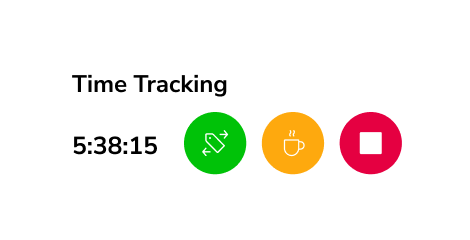How to Increase Focus and Productivity
Have you ever caught yourself staring at your to-do list and wondering where the day went? You’re not alone. In an age of endless pings, dings, and multitasking madness, staying focused has become one of the rarest and most valuable skills you can build.
This isn’t about working harder. It’s about working smarter. If you want to increase your focus and productivity, start with changing how you think about attention.
Let’s break it down.
Kill the Noise Before It Kills Your Focus
Distractions are everywhere, and your brain is paying the price. Every notification, browser tab, and background conversation chips away at your attention.
Here’s the truth: your brain can’t multitask. What it’s really doing is fast-switching, bouncing from one thing to the next and paying a tax every time it changes gears. That tax? Lost time, mental fatigue, and shallow work.
The solution? Lean into single tasks at a time. One task. One tab. One focus window.
Put your phone away. Use website blockers. Close your inbox. Make distractions harder to access. The fewer mental tabs open, the sharper your mind stays.

Photo by Andrea Piacquadio on Pexels
Schedule Deep Work Like It’s a Meeting With Your Boss
You wouldn’t cancel a meeting with your CEO. So why do we cancel the time we set aside for a critical task?
Block out time for deep work every day. Spend some time thinking about what time of the day you are at your most proactive, and schedule your most difficult tasks for then. These time blocks are for thinking, writing, and problem-solving. Not admin. Not meetings.
Defend that time like your paycheck depends on it, because it kind of does.
Not familiar with this method? Read our article on What is Time Blocking.
Create a Ritual That Triggers Focus
When it comes to productivity, rituals are your best friend. They help switch mental states and create consistency.
Your brain craves signals. That’s why rituals are powerful: they quietly tell your mind, “It’s time to focus.”
A ritual can be anything simple. Brew a cup of coffee. Light a scented candle. Put on the same playlist. Sit in the same chair. These tiny, repeatable actions anchor your brain and help it shift from distracted mode into deep focus mode.
The key isn’t complexity; it’s consistency. When you repeat the same action before work each day, your brain starts associating it with concentration. It becomes a mental switch that flips you into gear without needing as much motivation or willpower.
Learn more about the 8 Best Methods of Organizing Time.
Build a Recovery Loop Into Your Day
Productivity without recovery is just burnout in disguise. Breaks aren’t only for relaxing – they reset your brain for the next round of focus.
Just like going to the gym, you require time to recover between workouts. If you overdo it, you’ll risk injury, and the same applies to work.
These micro-recharges help reduce mental fatigue and improve retention. Without them, your attention span crashes, your motivation drops, and you’ll find yourself scrolling TikTok before you can say the words “Oh no is that the time?”.
No one does their best work tired. Protect your energy balance; work and rest sensibly.

Photo by Dylan Ferreira on Unsplash
Design a Workspace That Works For You
Your environment plays a massive role in your ability to focus. A cluttered space is a cluttered mind. A chaotic desk equals a chaotic thought process.
Keep your workspace simple and tidy. Organized desk, comfortable chair, good lighting. If possible, work near natural light to ensure you don’t strain your eyes.
Make sure that you have all your work essentials within arm’s reach. Having to get up to go find a highlighter pen won’t do your focus any good.
Also, pay attention to noise. If you’re in a noisy place, noise-canceling headphones or white noise can help. The fewer sensory inputs your brain has to manage, the more power it can put into actual thinking.
Single-Task Like It’s a Superpower
Multitasking quietly kills productivity. Each time you switch, you lose a little focus, and the more you bounce between tasks, the more mental energy you’ll have to burn just trying to get back on track.
Train yourself to do one thing at a time. It’s uncomfortable at first, but with practice, you’ll notice your mind feels calmer and your work gets better.
Write one report, not three drafts. Finish one email, then start the next. The quality of your output rises when your attention isn’t split five ways.
Read more: Is Multitasking Really Good for Your Productivity?
Audit Your Inputs, Not Just Your Outputs
What goes into your brain matters just as much as what comes out. If you’re constantly consuming junk content, your focus and creativity take a hit.
Make time in your day with something that feeds your mind. A podcast, a book, or even five quiet minutes with your thoughts.
Turn down the noise. Unfollow accounts that overstimulate. Set boundaries on media intake. Your brain has a finite amount of attention. Don’t waste it on junk food; consume nutritious content.
Track, Reflect, and Refine
You can’t improve what you don’t measure. Take five minutes each evening to reflect on your day. What worked? What didn’t? When did you feel focused? When did you fall off track?
Over time, you’ll notice patterns. Maybe you’re always sluggish after lunch. Maybe you focus best when you work from a café. These insights are gold. Use them to build a custom plan that fits your life.
Use a simple notebook or a productivity app. Don’t overthink it. Just track enough to learn from your behavior.

Photo by Nathan Dumlao on Unsplash
Final Thoughts
If you want to increase your focus and productivity, start with your mindset. Productivity isn’t about doing more; it’s about doing what matters, with a clear goal in mind.
Cut out distractions. Your brain can’t truly multitask, so don’t push it to. Block out deep work time and protect it like a must-attend meeting. Use small, repeatable habits to flip your mind into focus mode with ease.
Don’t skip recovery. Your brain requires breaks to recharge, just like muscles do, so protect your mental energy by mixing intense work with intentional breaks.
Design a workspace that makes focusing easy and keeps your mind clear. Single-task with discipline. Audit not just your to-do list, but what you consume; your mental inputs shape your mental output.
Take a moment to check in with yourself. Keep what’s working, fix what’s not, and shape a way of working that actually works for you.
Focus isn’t something you’re born with – it requires constant maintenance. Use it, train it, care for it, and it’ll keep getting better.
Related articles:
The Pareto Principle: Work Smarter, Not Harder
How to Meet Deadlines When Working Remotely


